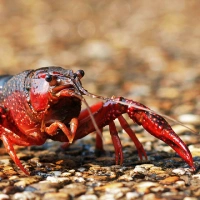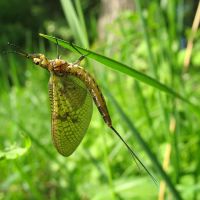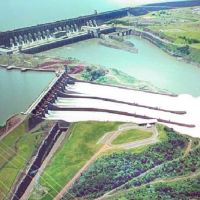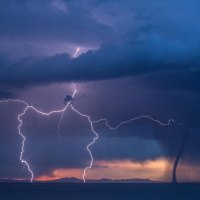Mayfly week: A brief history of fishing flies
Guest author: Dr Peter Barnard, formerly an entomologist from The Natural History Museum, London, examines the fascinating historical links between natural flies (including the mayfly) and fisherman’s artificial imitations, and wonders just how good the imitations have to be (article first published in 2004 in the British Journal of Entomology and Natural History, vol. 17, pp 1-9).
—
As a professional entomologist with a lifetime’s interest in freshwater insects I have always been fascinated by those species that are imitated by the artificial flies of anglers. Recently I became interested in the history of these fishing flies and, having begun to investigate how much we know of early artificial flies, I wondered just how good these imitations really need to be. It soon became clear that this question has exercised fishermen for a long time, and that the debate continues today!
Ancient Egyptian tomb paintings include several pictures of people fishing with rod and line, though it is not clear what bait they may be using. One such picture has a fly hovering over the water next to the fisherman, but its presence may be accidental. The first written record of flyfishing seems to be by the Roman author Claudius Aelianus (known as Aelian) in his work On The Nature of Animals, ca 200 AD, where he describes speckled fish (which must be native trout) in Macedonian streams feeding on flies that hover above the river, said to be the colour of a wasp and humming like a bee! These sound most like hoverflies, but later authors have speculated on whether they could have been some kind of mayflies. But the local Greek fishermen were said to have made artificial flies by tying red wool round a hook and attaching two red feathers, and these are described as irresistible to the trout.
The St Albans Treatyse
Although we have to assume that flyfishing continued in some form in several European countries there is the usual gap in the written word until the Middle Ages. But in 1496 a book called The Treatyse of Fysshynge wyth an Angle (i.e. with a hook) was published in St Albans, of which an original manuscript exists. The first page of the printed book shows a remarkably modern-looking fisherman (Fig. 1) but sadly there are very few illustrations, one notable exception being a drawing of many different sizes of hooks which, in the days before tackle-shops appeared, had to be hand-made.
But most important from our point of view is that the Treatyse contains the descriptions of twelve patterns of artificial flies, including details of how to tie them using different colours of wool, feathers and silk thread. Unfortunately the flies are not illustrated and it is difficult to follow the tying instructions, though several modern fishermen have made intelligent reconstructions. All are what would be considered as simple patterns nowadays, and some of their names such as “Stone Fly” and “Dun Fly” are similar to those of modern forms, but from an entomological viewpoint it is frustrating that we cannot be sure which natural flies they were imitating. The book was so popular that it was reprinted many times over the next century, and was later combined with other works to form the Book of Hawking, Hunting and Fishing
The first picture of a fly
No new fishing books were published for over a century, from 1496 to the end of sixteenth century. Then in 1620 appeared The Secrets of Angling by William Lawson containing just one picture of a fly, unfortunately such a crude illustration that we cannot tell whether it is an artificial or a natural, but at least it is the first published illustration of a fishing fly. Perhaps we should not be too hard on Lawson, because many books at that time contained very crude figures which do not necessarily reflect the quality of the original drawings. A good example is the first book on entomology published in Britain, Thomas Moffet’s Theatrum Insectorum (1634). It contains very crude woodcuts of insects, not at all easy to recognise to species level, yet the original manuscript of Moffet’s book, which still exists in the British Library, contains the original artist’s watercolour paintings. These demonstrate that the standard of observation and quality of painting were actually very high, and were not done justice by the woodcuts, which were no doubt made as cheaply as possible to keep printing costs low.
A little later in the seventeenth century appeared The Art of Angling by Thomas Barker (1651) containing descriptions of fishing flies, but again with no pictures. This book was based largely on the Treatyse of 1496, with just a few new fly patterns, still of a very simple kind. Over the next few decades a handful of other fishing books were published, again with simple fly types, and with little original content. But in 1653 came a milestone, a book that everyone has heard of, Izaak Walton’s The Compleat Angler. This became one of the most reprinted books of all time, yet its popularity is hard to explain. Walton seemed to know little about fishing, especially about flyfishing, yet he had a best-seller on its hands. He quotes unlikely tales from various sources without questioning their truth. But the book remains a very entertaining read even today and is still in print, having gone through over 400 editions and reprints.
The artificial flies described by Walton are something of a disappointment, as he quotes the same names as the 1496 Treatyse, written 150 years before! However, he also describes many natural insects, including several kinds of caddisfly larvae which are easily recognisable. But, rather tantalisingly, he does not link these larvae with the adults (in fact he believed that caddisfly larvae gave rise to mayflies!), and so there is still no link between natural and artificial flies. In the fifth edition of The Compleat Angler (1676), a second section was added by Charles Cotton on fishing for trout or grayling, which included more about flyfishing. The two authors seemed an unlikely pair in many ways: Izaak Walton was a pillar of the church, from an upper-class family, whereas Cotton was fond of the high life and was the author of some rather bawdy poems (though they seem rather tame today). But the two became lifelong friends and continued to fish together. Cotton was a less entertaining author, but a far better fisherman than Walton.
Tackle makers appear
We continue to be frustrated by the lack of illustrations in angling books until in 1662 The Experienc’d Angler by Robert Venables appeared. Venables was a colonel in the Roundhead army during the Civil War but in his later life he had the leisure time to write a book about fishing, and on the title page are a couple of tied flies, crude but recognisable as such. Up until this time anglers had to tie their own flies and, with the lack of published patterns, they presumably tried to match whatever flies they saw on their local river. But by 1700, in the back pages of a book called The Angler’s Vade-Mecum by James Chetham, we find the advertisement of a fishing tackle maker in London, specifically mentioning artificial flies for sale, and by the middle of the eighteenth century such adverts were common. Also by 1700 books were beginning to contain more pictures of artificial flies, together with the natural flies, both adults and larvae, although the naturals and artificials were never linked together.
Probably the most important book on fishing in the eighteenth century was The Art of Angling by Richard Bowlker (1774). This pocket-sized work contains descriptions of thirty artificial flies, all well illustrated, and was quickly followed by A Concise Treatise on the Art of Angling by Thomas Best (1787), which again had good illustrations of artificials, but still there was the frustration of not knowing which real flies they were imitating. As well as general angling books we begin to see specialised flyfishing works, such as the The Flyfisher’s Guide by George Bainbridge (1816). This had the promising subtitle “Illustrated by colour plates representing upwards of 40 of the most useful flies, accurately copied from nature”: it certainly had good plates of artificials, plus plates of natural flies, but again they were not linked to each other.
Most of us think of Sir Humphrey Davy as the famous physicist and inventor (of the miners’ safety lamp, for example) and as President of the Royal Society. But he was also a keen fisherman, although he wrote nothing on the subject until the last year of life and dictated a book called Salmonia on his deathbed in 1828. At first sight it looks like the answer to our entomological frustration, because it illustrates artificials and naturals side by side (Fig. 2), but sadly Davy failed to name any of the flies, just describing their appearance, and saying “I have not, however, the knowledge, or if I had, have not the time, to go through the lists of these interesting little animals”. So even by around 1830 there was still no link between well-established patterns of artificial flies and the natural insects, which by this time were also becoming well known and described in detail.
Alfred Ronalds
Then, at last, the breakthrough came. In 1836 appeared Alfred Ronalds’ Fly-fisher’s Entomology the first book to combine entomology and fishing, at least in the title. Ronalds illustrated 47 natural flies, and combined them with their artificials on the same plate (Fig. 3). He named the artificials, and also named the natural insects on which they were based: he not only described how to fish with the artificials, but also described the life-histories of the naturals. This was the first bridge between the two disciplines of angling and entomology, and a measure of success is that this book, first published in 1836, went through twelve editions, with the last one as late as 1921, basically unchanged and with the same colour plates. It is worth noting that Ronalds’ insect collection, on which he based these plates, still exists in the Hope Department, University of Oxford.
Ronalds’ book had a considerable effect on other angling authors. Two different directions of flyfishing began at this time: the attempt to match natural insects as closely as possible, and another school which took fly-tying to an art in its own right. So in 1847 we have a book called A Handbook of Angling by Edward Fitzgibbon, published under the pseudonym of “Ephemera” which contains what today would be called fancy flies. Many of these large, complex, brightly coloured flies were used for salmon, some even for sea-fishing. In an unpublished journal written in 1843, A.J. Lane illustrates a fearsome multiple-hooked pike “fly”, but of course pike, and indeed sea-fish, do not normally eat natural flies. Lane even suggests that one of the most successful pike flies is an imitation of a sand-martin! It may be preferable to call these creations artificial lures, rather than flies, as it is probably the bright colours and the way the fly is fished that attract the fish, rather than a resemblance to any real fly.
Returning to the school of good imitations of natural flies, in a book called The Scientific Angler by David Foster (1882) we find plates (Fig. 4) which follow the tradition of Ronalds (1836). All the flies are named and we also see larvae, including the hairy caterpillar of a moth. These, called Palmers, had been known as far back as Izaak Walton’s time, yet it is not clear which caterpillar they imitate (possibly some that drop into the water accidentally) but they seem successful as fishing flies.
Halford and Skues
At the end of the nineteenth century we come to one of the great names in flyfishing literature, Frederic Halford. He wrote several books, but the most significant to the entomologist is Dry Fly Entomology, published in 1897. He benefited from the excellent entomological work that had been published in the late nineteenth century, e.g. R. McLachlan on caddisflies and the Rev. A.E. Eaton on mayflies. Halford’s book included 100 best patterns of tied flies, each with a highly complex set of instructions for tying them. Precise materials and colours were specified, for example the fly called Tup’s Indispensable uses fur that for the right colour and consistency must be taken from the scrotal sac of a ram! The natural flies were much better illustrated than in previous angling books, showing complete life-cycles, though only in black and white figures (Fig. 5).
After Halford’s book there grew up enormously heated discussions about the merits of dry-fly fishing (i.e. using floating flies), wet-flies, and nymph-fishing. Halford reckoned that you could not imitate nymphs because you could not copy their movement, but he met his match in the shape of another well-known author, George Skues, who disagreed with almost everything Halford said. This is not the place to go into such arguments about different fishing methods, but clearly much depended on what the fish could actually see. Could they see colours, could they see fine details on a fly, did they see rising nymphs directly or reflected in the surface film ? One man, Francis Ward, decided to test some theories, and built himself an observation pond from which he could see just above and just below the water surface. He decided that “even the most gaudy fly, seen against the surface of the water, merely appears a grey iridescent silhouette, and for this reason I do not think that the colour of the fly matters if the size be right for the condition of the water and the fly be fished so as to suggest life”. This led to more controversy, with the formidable Skues joining battle again, and in some ways this argument still rages today.
The 20th century
Getting back on our entomological track, another important book appeared in 1921, Martin Mosely’s Dry-fly Fisherman’s Entomology. Mosely was a well-known fisherman, who also worked at The Natural History Museum in London for many years on the taxonomy of caddisflies, and his collection is still there. He felt that Halford’s monochrome illustrations of natural flies were unsatisfactory, so he produced this book with colour plates as a pocket-sized supplement to Halford. The illustrations are rather small though of good quality. But for much of the first half of the twentieth century anglers were presented with a rather indifferent succession of books on freshwater insects, starting with The Trout Fly by Leonard West (1912). West proudly proclaims at the bottom of his plates, “drawn by Leonard West from nature”, but one has to doubt his powers of observation as all the wings are figured upside down, though this does not prevent the book from fetching high prices on the second-hand market! Similar books include Charles Wauton’s Troutfisher’s Entomology (1930) in which the illustrations are scarcely recognisable, and another pocket book The Fly-Fisher’s Flies by Roger Woolley (1933), in which it is claimed that “anglers will find they are able to tell almost at a glance what natural fly is on the water”: in fact the line-drawings are not really up to the job.
Thankfully things improved again after the 2nd world war, with the introduction of the famous New Naturalist series of books, of which one of the earliest was An Angler’s Entomology by J.R Harris, published in 1952. Harris was a good angler and a good entomologist, and this was one of the first freshwater insect books to rely on colour photos, all taken from living or freshly killed specimens, though it has to be said that some plates were less successful. However, the text was the best to date, setting new standards for succeeding publications, and also had distribution maps. Slightly later, Lake flies and their imitation by C.F. Walker (1960) went back to using paintings rather than photos, and harked back to the Ronalds’ tradition of putting naturals and artificials on same page. In recent years we have seen excellent identification guides to freshwater insects with top-quality photos or paintings. The variety of artificial flies now available commercially is staggering, with several hundred named patterns. The demand for more realistic imitations has led to some incredibly accurate copies of both adults and larvae of freshwater insects.
Whether the accuracy of the artificial, or its presentation to the fish, is more important, is the subject of constant discussion amongst flyfishermen. But I suggest that accurate fly-tying is the result of careful observation by the angler, and such an observant angler, who understands freshwater life, is sure to be more successful.
This is of course a very brief travel through the history of fishing; for those who want to study the subject in more detail I would highly recommend Andrew Herd’s book The Fly (The Medlar Press, 2001).




















